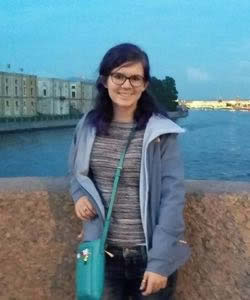On September 23, 2015, President Vladimir Putin attended the opening ceremony of what is now the largest mosque in Europe. Two years ago, on that very same date, riot police and protesters were in the street yelling about the dangers of a Muslim minority in Moscow. St. Petersburg also has a mosque, though not as grand, as well as a Buddhist temple, Catholic church, and Jewish synagogue. Despite the presence of these different religious centers, the culture and values of Russian society are still staunchly espoused as Russian Orthodox. The belief among Russians about the importance of Slavic ethnicity and Orthodox belief has not faded in the past two years, so why is the Russian president speaking at the opening of a mosque in Moscow? My personal encounters in St. Petersburg lead me to an interesting conclusion: the Russian understanding of what constitutes a “Russian” has been challenged.
Ethnic backgrounds in Russia are of particular importance, especially with tensions in Ukraine at a standstill, or perhaps more accurately, a standoff. I have spoken with several Russians about this issue—both young and old—and the reply is always centered on one subject: sameness. Russians are confused by the conflict in Ukraine because Ukrainians “are the same” as Russians. For Russians, Ukrainians largely look the same, talk the same, and practice the same religion. According to one of the Russian students I spoke with, she considers half of Ukraine to be ethnic Russian. They are “brothers.” So, why such conflict?
Sameness in ethnicity, race, and belief seem to have long been associated with security and peace—an association that is now being challenged. This phenomenon can also be observed in the way Russians talk about feminism, race, and LGBTQ rights. Women’s rights are not a topic of conversation because “men are like men” and “women are like women.” As my host sister stated at dinner, “It has pros and cons, but that is just how it is.” My host mother, an incredibly sweet woman of approximately middle age, says “We don’t have gays in Russia,” and that is all there is to say on the topic. No need for conflict when it is not an issue, right? When it comes to race, one of the first things I noticed about St. Petersburg was that 80 percent of people I see are white, Caucasian-looking individuals. The other 20 percent appear to be of Asian descent. Unfortunately, a lack of exposure to more obvious cultural and external differences, such as skin colors and body types, has led to disappointingly ignorant views on race. Outside of a white, cisgendered, heterosexual context, there is more blatant discrimination.
However, an emphasis on sameness is not inherently a bad thing by any means. Russians are welcoming, polite, and emphatic about the sameness between them and myself. I may be from America, but “we are the same as humans,” they assure me. They know I come from a different place and may have different views, habits, and mannerisms, but as I am willing to learn about their lives and experience Russian culture, it does not create tension. Sameness is a rather exciting prospect in this context, because it is challenging and interesting to try to fit in with Russians on the metro, at the bus stop, and at cafes. Russians do not sit on the ground (unless they are in need of an ambulance.) Purses and bags remain on a person, never on the floor. Exact change is encouraged and, depending on the attitude of the bus attendant, often required on the autobuses, or you will find yourself walking the rest of the way. If you go to a café, expect to be there for at least an hour, and don’t ask to split a check. Exploring the informal rules of Russian culture make living here a challenging but fun experience.
Encouraging sameness is not inherently right or wrong—it is merely an attitude I have observed among the Russian people during my time here. In some cases, it serves to create a strong, enduring culture with unique traditions and historical connections. It creates a friendly, polite, and welcoming environment. In other instances, however, staunch perpetuation of sameness in place of real solutions can be damaging. Perpetuating sameness is not a solution to ethnic tensions, LGBTQ discrimination, or racism. It can be used as a Band-Aid, perhaps, but in the words of Taylor Swift, an absurdly popular artist even in St. Petersburg, “Band-Aids don’t fix bullet holes.”

